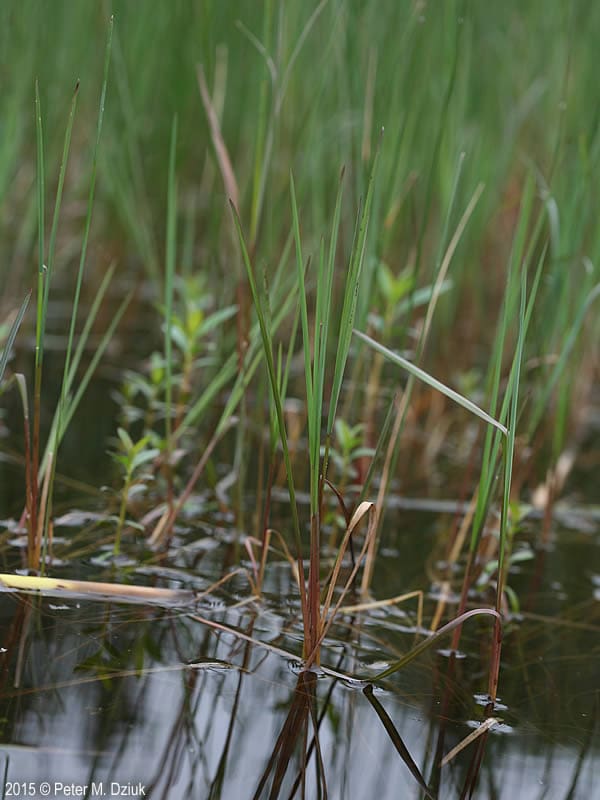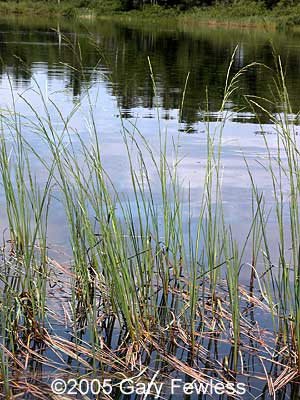As an enthusiast of aquatic plant species, you would find Northern Mannagrass a fascinating subject of inquiry. This article explores the unique aspects of Northern Mannagrass, its botanical characteristics, its natural habitat and its role within diverse ecosystems. As you read, you’ll ascertain how sophisticated the world of aquatic plants can be, and how vital these species, specifically Northern Mannagrass, are to environmental stability. Overall, this piece provides an enlightening perspective on the complex world of plants surviving and thriving in water bodies.
Overview of Northern Mannagrass
General description
Northern Mannagrass is a fascinating aquatic plant species that stands prominently in freshwater bodies. This perennial herb produces distinctive, tall and slender stems which bear narrow leaves, making it easily recognizable among other aquatic flora. Adding to this appeal, its leaves gracefully sway in the water. This versatile plant not only survives but thrives in both submerged and emergent conditions, giving it a unique advantage over other species in fluctuating water bodies.
Scientific name and classification
The scientific name for Northern Mannagrass is Glyceria borealis. It belongs to the Glyceria genus that comes under the Poaceae family, more commonly recognized as the grass family. This family consists of about 600 genera and more than 10,000 species.
Geographical distribution
Northern Mannagrass displays a wide geographical distribution. It is predominantly found across the Northern Hemisphere, from the broad expanses of Siberia to North America. It mainly thrives in the temperate regions of these continents and has even been found in the far-reaching corners of the Arctic Circle.
Northern Mannagrass Habitat
Preferred water conditions
Northern Mannagrass prefers a water environment to grow. This means it’s commonly found thriving in conditions such as marshes, fens, and edges of ponds, lakes, and slow-flowing rivers. The versatility of this species enables it to adapt to variations in water depths from saturated soil to submergent conditions.
Soil requirements
Northern Mannagrass is quite adaptable when it comes to soil. It grows best in wet, mucky, and sandy soils, but its adaptive nature allows it to thrive in a variety of soil textures provided that they are perpetually moist.
Climate and light needs
A temperate climate is the most favorable condition for the growth of Northern Mannagrass. It can tolerate a wide range of moisture conditions and can endure partially shaded areas. However, Northern Mannagrass develops optimally in areas receiving full sun.

Growth and Development of Northern Mannagrass
Growing season
The growing season for Northern Mannagrass extends from late spring to early fall, with the plant reaching its maximum growth during the summer.
Height and width
The plant can reach an impressive height ranging from 1.5 to 5 feet, depending on environmental conditions. However, its width is comparatively modest, spreading to about 6 inches.
Growth rate
Northern Mannagrass has a moderate to fast growth rate. It grows faster and spreads vigorously under favorable conditions.
Flowering and seed production
Northern Mannagrass produces a dense cluster of greenish flower spikes during its flowering season which typically falls between late spring and early summer. Its seeds are small and ripen from August-September.
Ecological Importance of Northern Mannagrass
Role in water filtration
One significant ecological role of Northern Mannagrass is its contribution to water filtration systems. Its root system helps filter out pollutants from freshwater ecosystems, thus enhancing water clarity and health.
Habitat for aquatic life
Northern Mannagrass provides a valuable habitat for various forms of aquatic life. Insects, crustaceans, fish, and amphibians can often be found sheltering amongst its leaves or feeding on the small organisms that inhabit the plant.
Contribution to biodiversity
By serving as a home for various aquatic species, Northern Mannagrass enriches the biodiversity of the surrounding environment.

Interaction with Wildlife
Attraction for birds
Northern Mannagrass serves as a significant feeding ground for various bird species. The seeds offer a vital food source during the migration season.
Food source for aquatic animals
Its importance extends below the water surface. The plant provides a substantial food source for aquatic animals, including waterfowl and certain types of fish.
Role in nesting and reproduction of aquatic creatures
Apart from serving as a food source, Northern Mannagrass also offers a secure place for nesting and reproduction for certain species like fish and amphibians.
Uses of Northern Mannagrass
Use in landscaping and water gardens
Due to its aesthetic appeal and the sense of natural tranquility it offers, Northern Mannagrass is popular in landscape designs especially around water bodies. It is also prominent in water gardens for its beautiful green texture that offers a contrast to the aquatic environment.
Use in habitat restoration projects
Given its ecological significance and adaptability, Northern Mannagrass often comes into play in habitat restoration projects where it helps maintain biodiversity.
Potential medicinal uses
While more research is required in this area, a few studies allude to potential medicinal uses of Northern Mannagrass, particularly in the treatment of certain respiratory conditions.

Cultivation of Northern Mannagrass
Propagation methods
The most common propagation method for Northern Mannagrass is through seeds. However, it could also be propagated via division, separating and planting individual rhizome portions.
Ideal planting time
The ideal planting time for Northern Mannagrass coincides with its growing season, which commences in late spring.
Maintenance and care
Regular watering and ensuring the soil is consistently moist is crucial for the growth and wellness of Northern Mannagrass. It grows in a range of light conditions, but a sunny spot is best catered to its growth.
Common pests and diseases
Northern Mannagrass doesn’t ordinarily suffer from major diseases or pests that hinder its growth. However, poor growth conditions might make the plants more susceptible to occasional threats such as insect infestations.
Conservation Status and Threats
Current conservation status
Given its widespread distribution and adaptability, Northern Mannagrass is not listed as a threatened or endangered species. However, the loss of wetland habitats in certain regions may induce localized threats to its population.
Threats and concerns
Habitat destruction and water pollution stand as the main threats to Northern Mannagrass. The invasion of aggressive, non-native species in its habitats may also impact its growth and distribution.
Conservation and protection efforts
Preserving wetland habitats and controlling water pollution are critical for the conservation of Northern Mannagrass. Also, the removal of invasive species helps maintain its habitats.

Research and Studies on Northern Mannagrass
Impact of climate change on Northern Mannagrass
Climate change, particularly the increasing temperatures and shifting precipitation patterns, might change the ecosystem balance, potentially impacting the distribution and growth of Northern Mannagrass.
Genetic studies
Genetic studies provide valuable insight into the adaptability and resilience of Northern Mannagrass, which also supports conservation efforts.
Pharmacological research
While many aspects of the plant’s medicinal properties are still under study, pharmacological research is exploring its potential applications in traditional medicine practices.
Miscellaneous Facts about Northern Mannagrass
Historical uses and significance
Historically, the plant has been used in different cultures for various purposes, predominantly as animal fodder.
Unique adaptations and characteristics
Northern Mannagrass possesses unique adaptations that allow it to survive both in and out of water, and to withstand seasons with fluctuating water levels which makes it resistant to various environmental changes.
Myths and folklore
Although somewhat obscure in modern folklore, native tribes often associated Northern Mannagrass with fertility and abundance due to its rapid growth and seed production.
